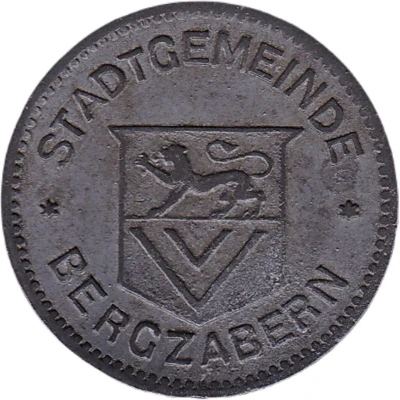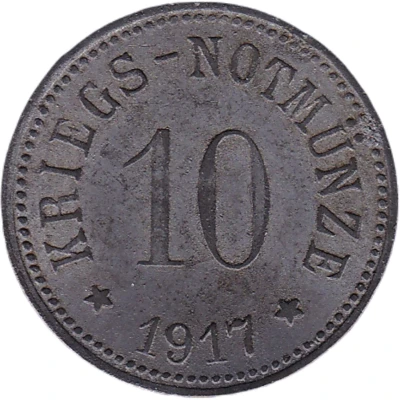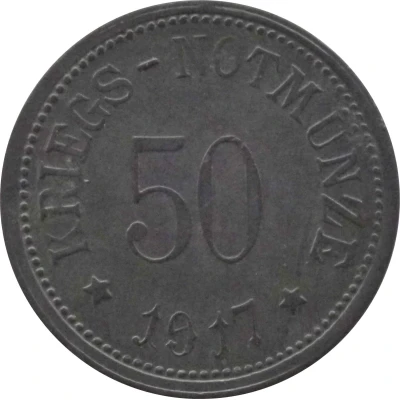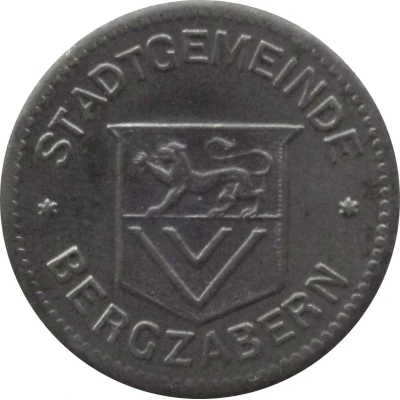
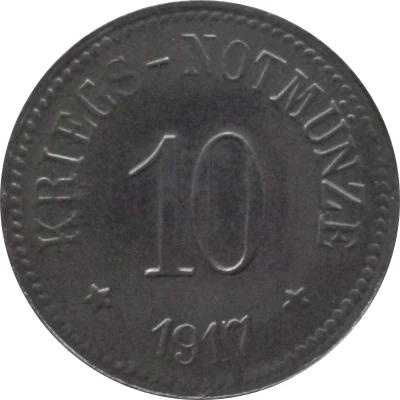

© Willem63 (CC BY-NC-SA)
10 Pfennigs - Bergzabern
1917 year| Iron | 2.4 g | 20.0 mm |
| Issuer | City of Bergzabern (Federal state of Bavaria) |
|---|---|
| Emperor | William II (Wilhelm II) (1888-1918) |
| Type | Standard circulation coin |
| Year | 1917 |
| Value | 10 Pfennigs (10 Pfennige) (0.10) |
| Currency | Mark (1914-1924) |
| Composition | Iron |
| Weight | 2.4 g |
| Diameter | 20.0 mm |
| Thickness | 1.0 mm |
| Shape | Round |
| Technique | Milled |
| Orientation | Medal alignment ↑↑ |
| Demonetized | Yes |
| Updated | 2024-10-04 |
| Numista | N#190901 |
|---|---|
| Rarity index | 86% |
Reverse
Legend and date surrounding denomination centered
Script: Latin
Lettering:
KRIEGS-NOTMÜNZE
10
★ 1917 ★
Edge
Plain
Comment
Issuing agency: [Stadt, Pfalz]Manufacturer: C.Balmberger, Nürnberg
Interesting fact
The 10 Pfennigs - Bergzabern 1917 coin was issued during a time of economic turmoil in Germany, known as the "Inflationary Period" (1914-1923). During this time, the value of the German mark (the national currency) plummeted, and prices for everyday goods skyrocketed. As a result, many Germans turned to alternative forms of currency, such as local emergency currencies like the 10 Pfennigs - Bergzabern 1917 coin. This coin was issued by the City of Bergzabern in Bavaria as a temporary solution to the currency shortage, and it was only valid for use within the city limits. Despite its humble origins, the 10 Pfennigs - Bergzabern 1917 coin has become a sought-after collector's item among numismatists today.
